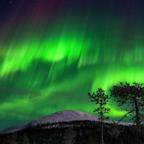Heat and Homicide
June 19, 2006 — -- In New Haven, Conn., police have arrested two teens in the fatal shooting of Jajuana Cole, a 13-year-old student who had been shot in the back late Friday outside her apartment building.
In New Bedford, Mass., over the weekend, police investigated the fatal shooting of a 35-year-old man found in a car parked on an exit ramp.
In New York City, four people recovered from stabbings suffered in separate incidents on the subway late last week.
The violence is part of a Northeast crime spike that has coincided with a rise in temperatures.
The National Oceanic and Atmospheric Administration said today that the contiguous United States had experienced its warmest spring since 1895, when seasonal record-keeping began.
For years researchers have looked into a possible relationship between heat and violence.
There are conflicting results over whether there is an actual correlation between rising tempers and rising mercury, but the murder rate perennially increases during the months of July and August, according to the FBI's annual crime report.
Many police chiefs say they put more cops on the streets when the heat rises.
"There's always calls for service increases from May, June, July and August," said New Bedford's Capt. Richard Spirlet, who is investigating the killing that happened over the weekend.
"The longer period of time you have the heat, the worse it is. … It's just the reverse in the winter time, crime is all but nil."
Craig Anderson, a professor and specialist in social psychology at Iowa State University, argues the evidence is clear.
"As the temperature goes up, people become more uncomfortable. They become more irritable," he said. "That … increases the likelihood that a minor conflict will be interpreted as more major."
"Some people might respond somewhat more aggressively than they would have. … You get into an escalation cycle and that's how most homicides and serious assault fights get started," Anderson said.




